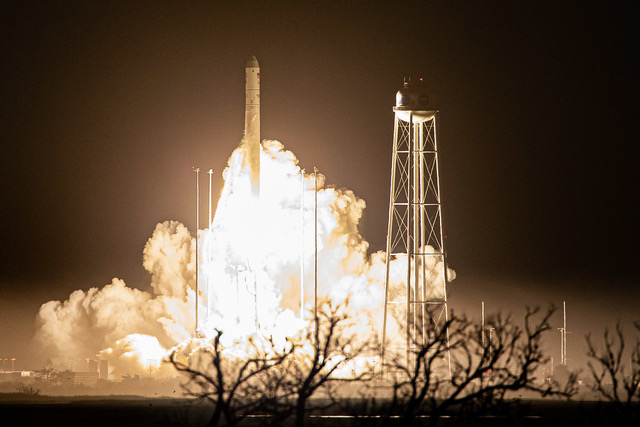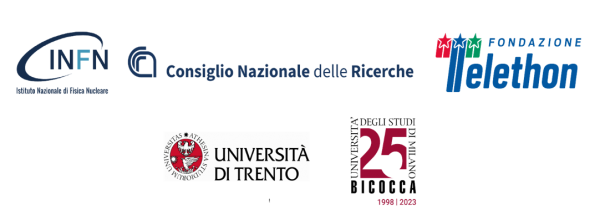
Launched toward the International Space Station is the Zeprion experiment, which will be tasked with confirming the molecular mechanism behind an innovative pharmaceutical protocol to combat prion diseases. Developed by an international team of researchers, including Italian scientists from the universities of Milano-Bicocca and Trento, the Telethon Foundation, the INFN National Institute of Nuclear Physics and the Institute of Agricultural Biology and Biotechnology of the National Research Council (CNR-Ibba), the experiment could have important spin-offs for other diseases as well.
An experiment successfully initiated with the space shuttle launch of today, Wednesday 2 August, towards the International Space Station (ISS), could validate a novel protocol for the development of new drugs against serious neurodegenerative diseases and more. The result of an international collaboration involving several academic institutions and the Israeli company SpacePharma, the ZePrion experiment sees a fundamental contribution from Italy through the Universities of Milan-Bicocca and Trento, the Telethon Foundation, the National Institute of Nuclear Physics (INFN), and the Institute of Agricultural Biology and Biotechnology of the National Research Council (CNR-IBBA). Launched with the NG-19 robotic space refuelling mission from the Wallops Island base in Virginia (USA), ZePrion aims to exploit the microgravity conditions in orbit to test the possibility of inducing the destruction of specific proteins in the cell by interfering with their natural folding mechanism (protein folding). NG-19 and Zeprion are scheduled to arrive on the ISS on Friday, Aug. 4, when it will be about 8 a.m. in Italy.
The success of the ZePrion experiment would discover the molecular mechanism behind a new therapeutic strategy called Pharmacological Protein Inactivation by Folding Intermediate Targeting (PPI-FIT), developed by researchers from the Universities of Milan-Bicocca and Trento and the INFN. The PPI-FIT approach is based on the identification of small molecules (called ligands) that are able to catch a target protein during its spontaneous folding process, thus preventing it from reaching its final form, ultimately leading to its degradation.
‘The ability to block the folding of specific proteins involved in pathological processes opens the way to the development of new therapies for currently incurable diseases,’ explains Pietro Faccioli, professor at the Milano-Bicocca University, INFN researcher, coordinator of the experiment and co-inventor of the PPI-FIT technology.
A missing piece in the validation of the technology to date is the molecular detail of the interaction between a therapeutic small molecule and the intermediate form of its target proteins, in order to capture a 3D image of the complex disrupting the folding process. Typically, this type of structure is obtained by analysing crystals formed by the ligand-protein complex using a technique called X-ray crystallography. In the case of protein intermediates, however, the necessary experiments are not feasible within the laboratories on Earth, as gravity generates effects that interfere with crystal formation, when the protein has not yet reached its final form. This prompted the ZePrion collaboration researchers to take advantage of the microgravity condition at the International Space Station.
“There is indeed clear evidence that the microgravity present in orbit provides ideal conditions for the formation of protein crystals,” explains Emiliano Biasini, a biochemist at the University of Trento and another co-inventor of PPI-FIT, “but no experiment has so far tried to crystallize an incompletely folded protein in complex with a ligand. This is exactly what the ZePrion experiment aims to do, working specifically on the prion protein, which sadly made headlines in the 1990s during the ‘mad cow disease’ crisis. This disease is in fact caused by an altered form of the prion protein called prion, involved in serious neurodegenerative diseases known as ‘prion diseases’ such as Creutzfeld-Jakob disease or fatal familial insomnia.
‘Also thanks to the support of the Telethon Foundation, which have been long supporting my research to find new therapies against these diseases, we have the opportunity to validate the working mechanism of the PPI-FIT technology, which could truly represent a turning point in this field’ adds Biasini.
“In orbit, it will be possible to generate crystals of a complex between a small molecule and an intermediate form of the prion protein, which under ‘normal’ gravity conditions would not be stable. These crystals will then be analysed using X-ray radiation produced by particle accelerators to provide a three-dimensional photograph of the complex at atomic resolution detail. Non-crystalline samples obtained at the ISS will also be analysed by Transmission Electron Cryo-microscopy (Cryo/EM),’ emphasises Pietro Roversi, a CNR-IBBA researcher.
ZePrion consists of a real miniature biochemical laboratory (lab-in-a-box) built by SpacePharma, which will operate on board the International Space Station and will be remotely controlled from Earth. In addition to the Italian component, the ZePrion collaboration includes the participation of scientists from the University of Santiago de Compostela.
Press contacts
INFN Communication Office
Matteo Massicci: matteo.massicci@presid.infn.it – +39 06 68400361/+39 333 47 53 363
CNR Press Office
Francesca Gorini: francesca.gorini@cnr.it – +39 329 317 8725
Emanuele Guerrini (Manager): emanuele.guerrini@cnr.it – +39 339 210 8895
Secretariat: ufficiostampa@cnr.it – +39 06 4993 3383 – P.le Aldo Moro 7, Rome
Press Office Telethon Foundation – HAVAS PR Milan
Thomas Balanzoni – thomas.balanzoni@havaspr.com – +39 02 85457047/+39 346 320 4520
Giovanna Giacalone – giovanna.giacalone@havaspr.com – +39 02 85457053/+39 366 612 3607
University of Trento Press Office and External Relations
Alessandra Saletti: alessandra.saletti@unitn.it – +39 0461 281131/+39 328 15 07 260
University of Milan-Bicocca Press Office
Maria Antonietta Izzinosa: +39 02 6448 6076/+39 338 694 0206
Veronica D’Uva: +39 02 6448 6373/+39 335 168 5364 ufficio.stampa@unimib.it
